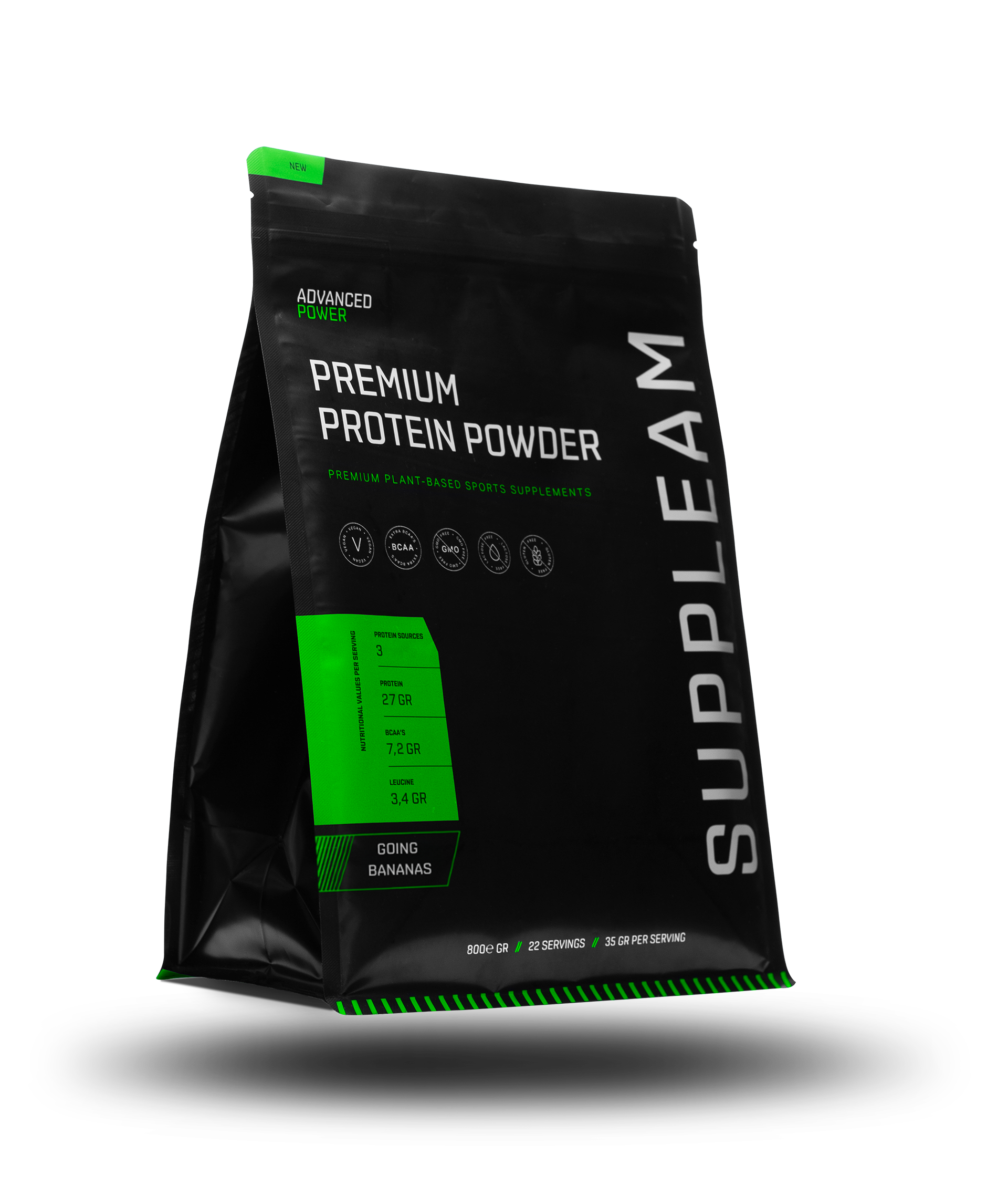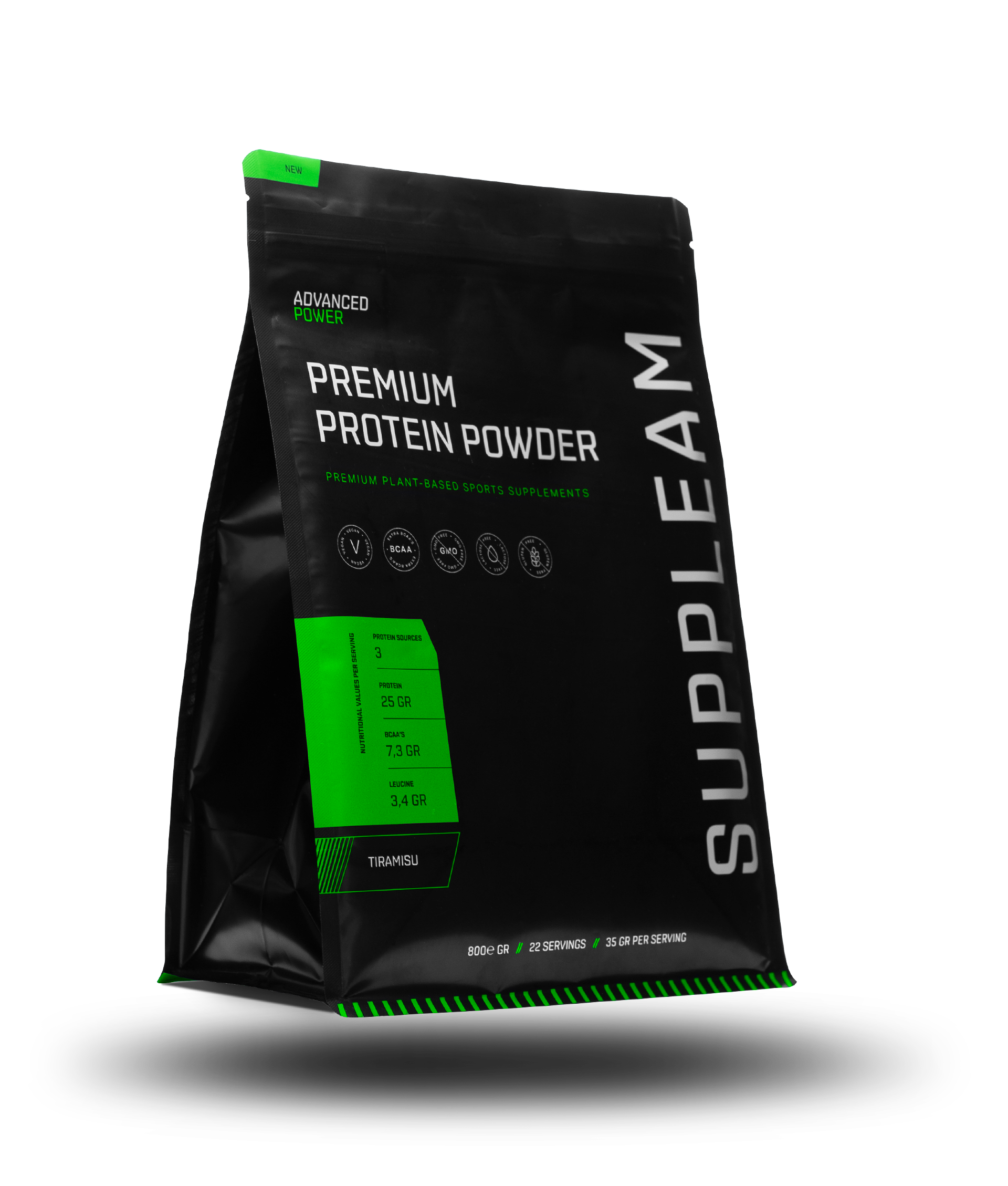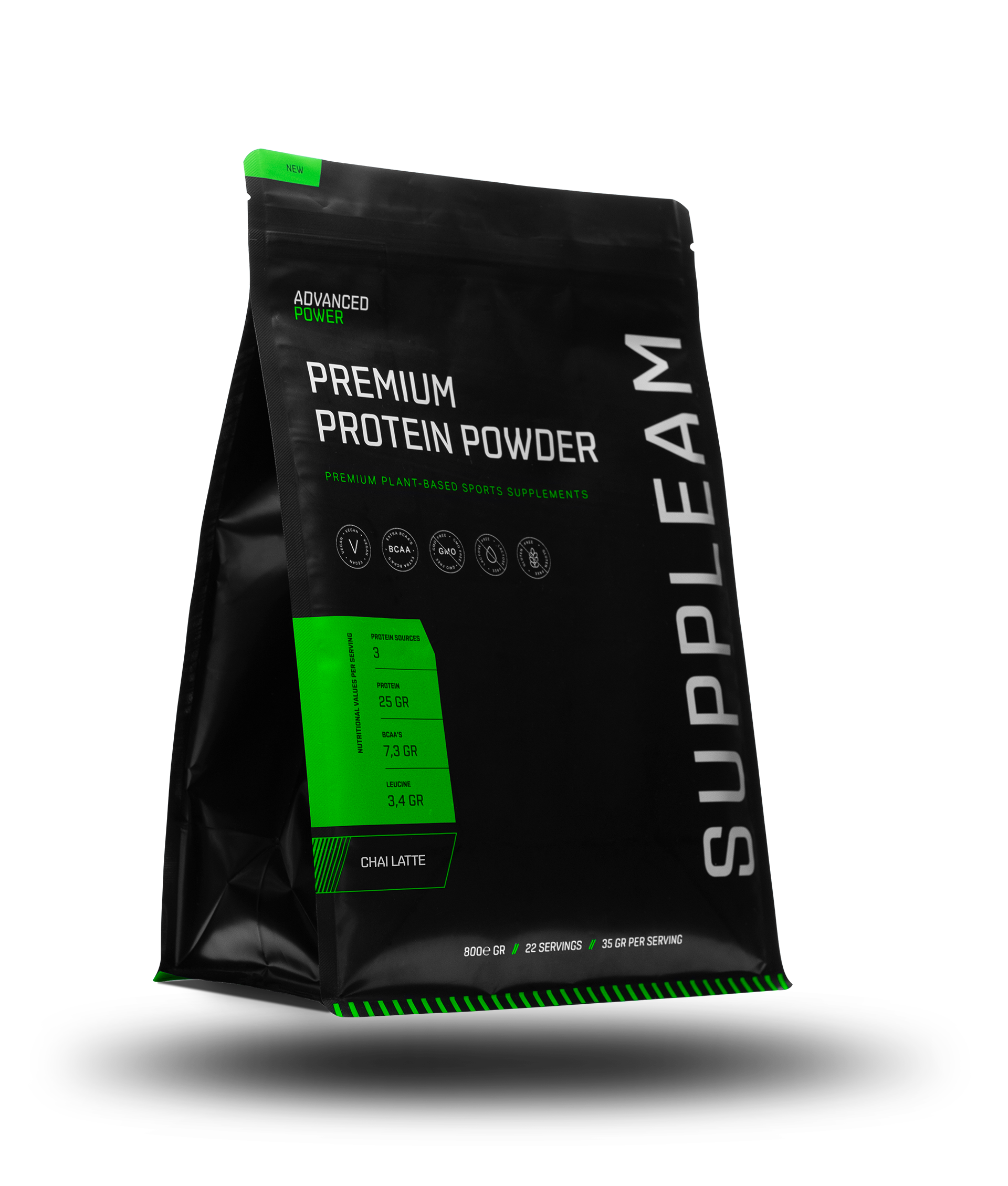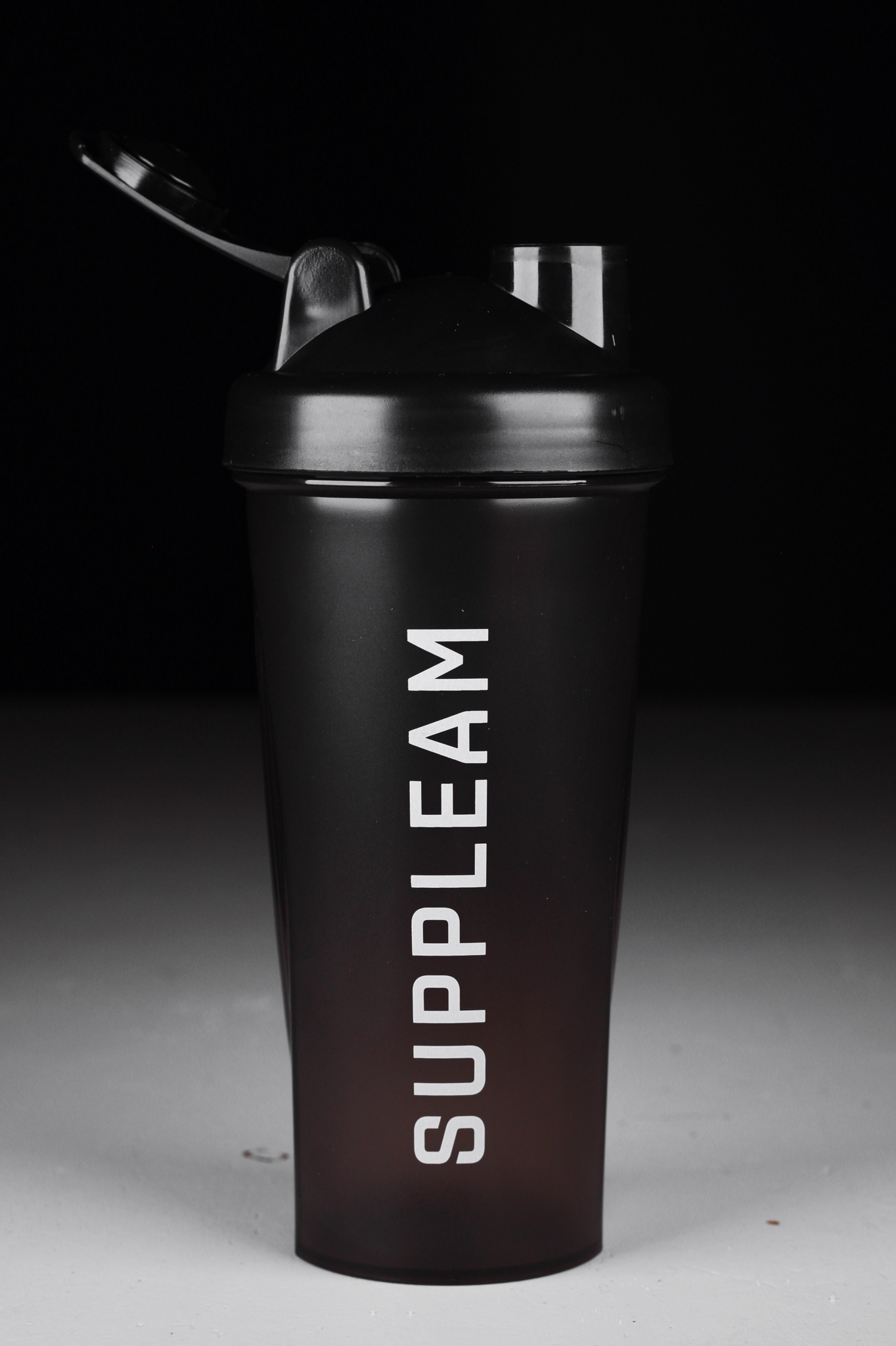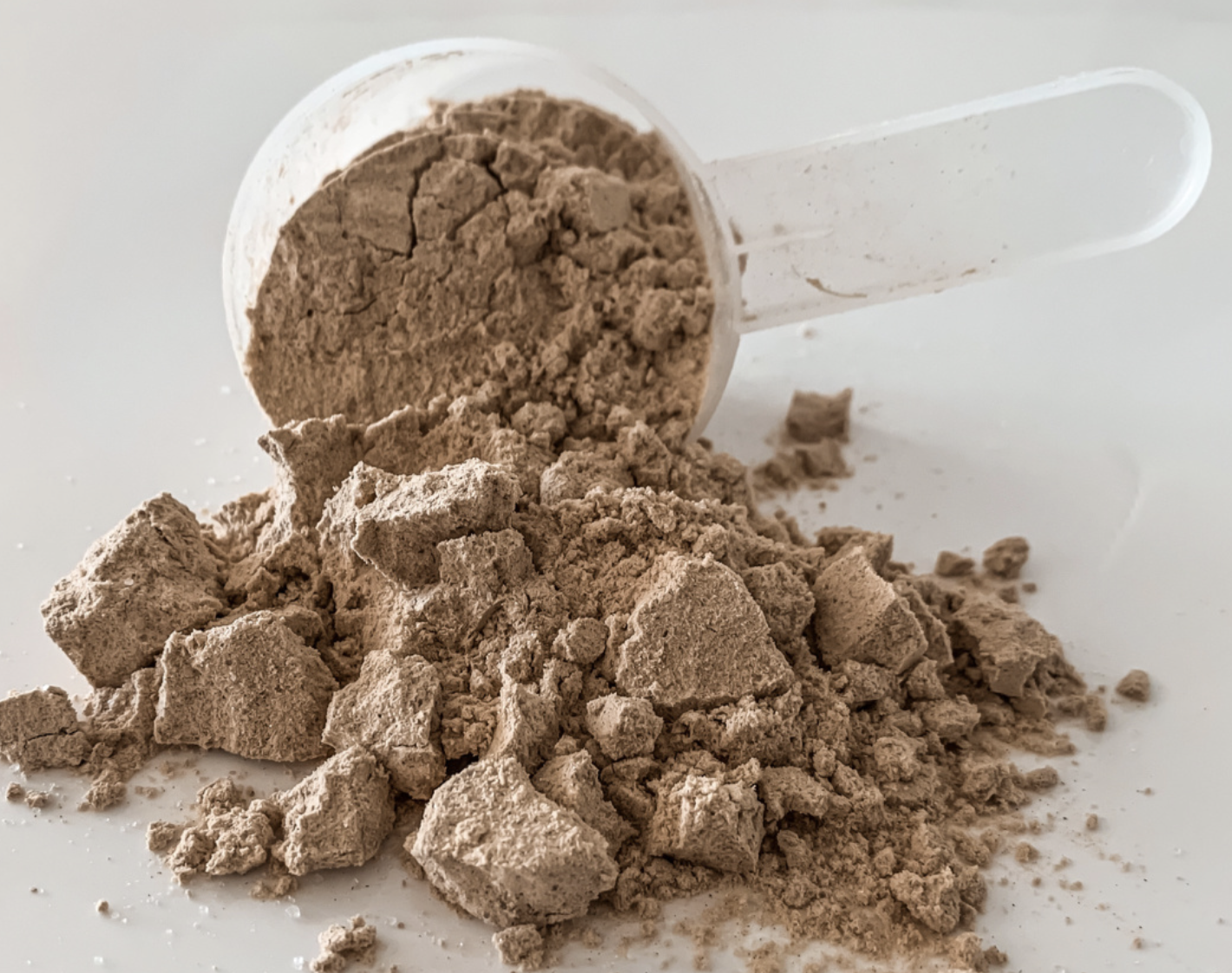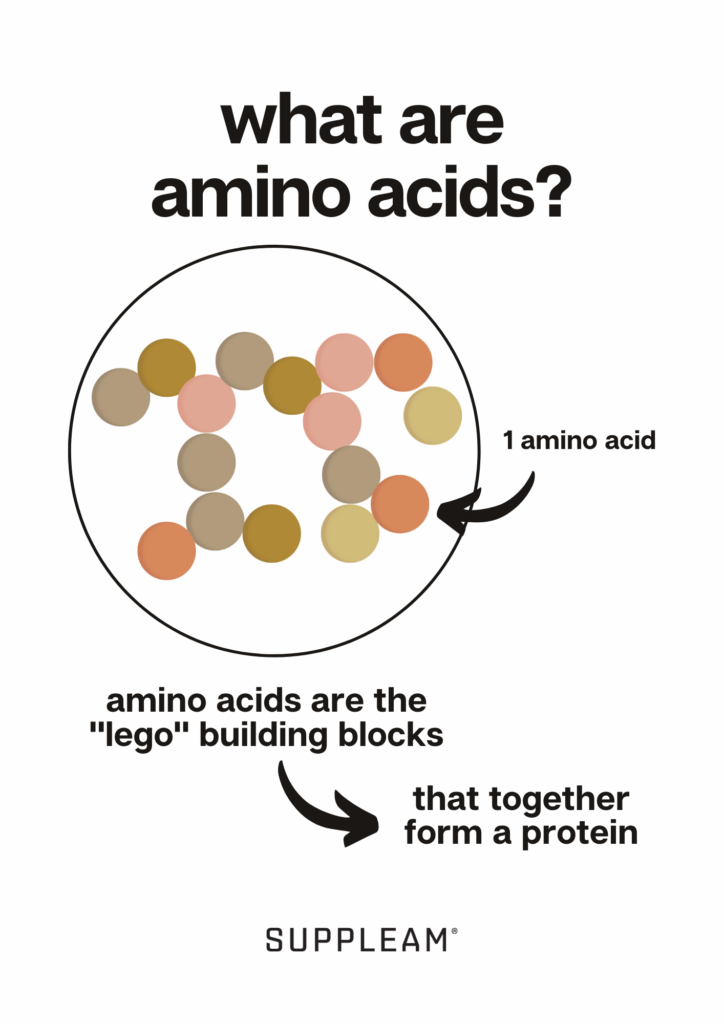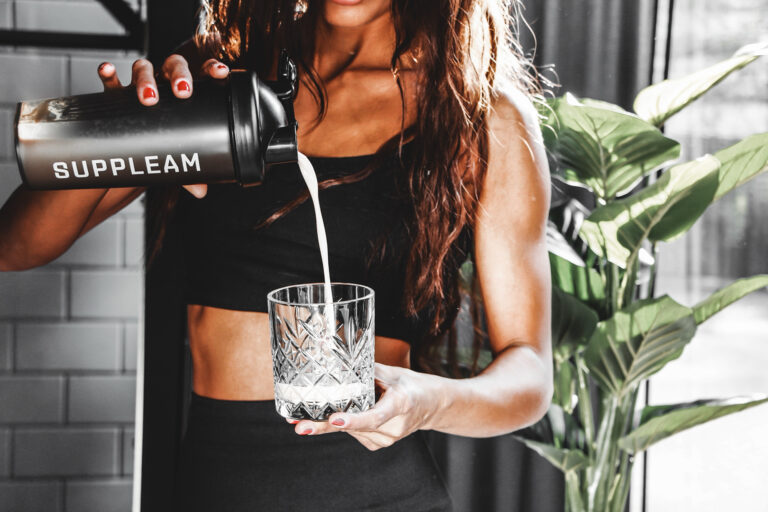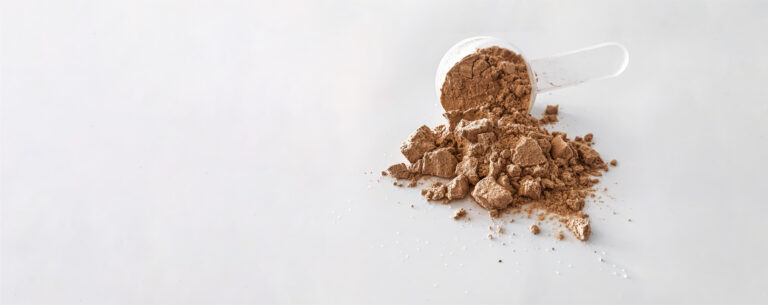What exactly is protein powder and how does it work in our bodies? In this article, I explain what protein powder does, what types there are and what the best way is to use it.
Written by A.L. Oosterling BSc sports dietitian, NSCA-CPT, ISAK anthropometrist
What is Protein Powder?
Protein powder is a powder consisting mainly of protein in “isolate” or “hydrolysate” form. These proteins are extracted from various sources, including cow’s milk, eggs or plant-based sources such as peas, rice and soy. If you want to learn more about how protein powder is made, click here. The purpose of protein powder is to help people get an extra portion of protein to more easily meet their daily protein needs.
A continuous breakdown and build of body proteins
In our bodies, there is a continuous breakdown and buildup of body proteins. Proteins are used for a variety of body functions, including building and repairing muscles and body cells, but also supporting the immune system and making enzymes and hormones.
This is where the digestion of protein starts
Stomach
When you eat or drink protein, it enters the stomach. Our gastric juice contains an enzyme that turns larger proteins into smaller proteins.
Small intestine
- In the duodenum, pancreatic juice mixes with the food we ate. Pancreatic juice contains enzymes, which chop proteins into even smaller pieces.
- In the wall of the small intestine are millions of tiny glands that make intestinal juice. Gut juice contains enzymes that break down the smaller pieces of protein into amino acids. Amino acids are the building blocks of a protein. Comparable to a house made of LEGO, in which each amino acid symbolizes a LEGO block.
- Through the wall of the villi, the amino acids pass through the blood to the liver.
Liver
The liver plays an important role in processing protein. It selects amino acids from the blood and distinguishes different types: essential and non-essential amino acids Some amino acids are used to make muscle proteins, others for liver and blood proteins, and the rest are converted or broken down.
If there’s a shortage of amino acids, the liver can create new non-essential amino acids. If an excess of amino acids, the liver can also convert amino acids into energy (fuel in calories); per 1 gram of protein, releases about 4 kcal. In this process, nitrogen groups are separated from amino acids and converted into urea, which the kidneys remove from the body through urine.
An excessive calorie deficit (for example, when losing a lot of weight), but also if you eat too few carbohydrates, or experience stress (illness), your body uses more protein for energy than for building muscle. In this case, more protein is needed to avoid losing too much of our muscle.
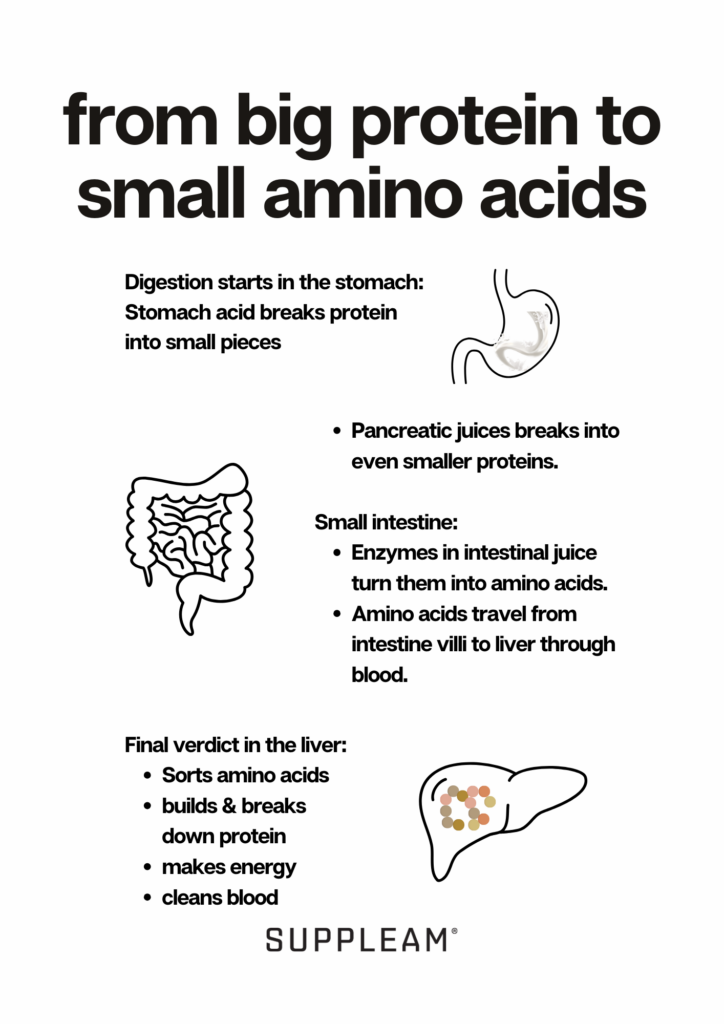
Why is protein important for muscle? Some facts in a row
- Our muscles are made up of proteins (amino acids).
- If you don’t eat enough protein, your body can’t build visible new muscle.
- If you want to build muscle mass, you will need to combine weekly strength training with about 1.6-2.2gr of protein per kg/day.
- After exercise, your body needs more protein to repair damaged muscle fibers and build new ones.
Why is protein important for losing weight? Some facts in a row
- Protein helps with feeling full (especially when combined with fiber from vegetables, fruits and whole grain products).
- Digesting protein uses more energy than digesting carbohydrates or fats. This is why eating significant amount of protein increases your metabolism, resulting in a higher calorie output even when you are not active. For example, if you get 30% of your calories from protein, you will burn more than if you only get 15% of your calories from protein.
- Eating enough protein protects your muscles while losing weight. If there’s not enough protein, the body will burn muscle tissue for energy. If you eat enough protein, you keep more muscle, keep your metabolism steady, and burn relatively more fat.
How does protein powder work?
Protein powder is a powder with almost no fats or carbohydrates. The proteins have already been chopped into smaller pieces. This is when we call them isolates or when they are chopped up even further: hydrolysates. Since protein powder is so to speak, “pre-digested,” the protein from protein powder is relatively easy to digest and therefor can be absorbed quickly. A hydrolysate even a little faster than an isolate.
So, when you drink a protein shake made with water, digestion is faster than with a regular meal that includes fats, carbohydrates and fiber. But, if you add additional ingredients such as plant-based milk, fruit, nut butter or oatmeal, digestion takes just a little longer because these ingredients contain fats and fiber. Either way, liquid food tends to be digested faster than solid food.
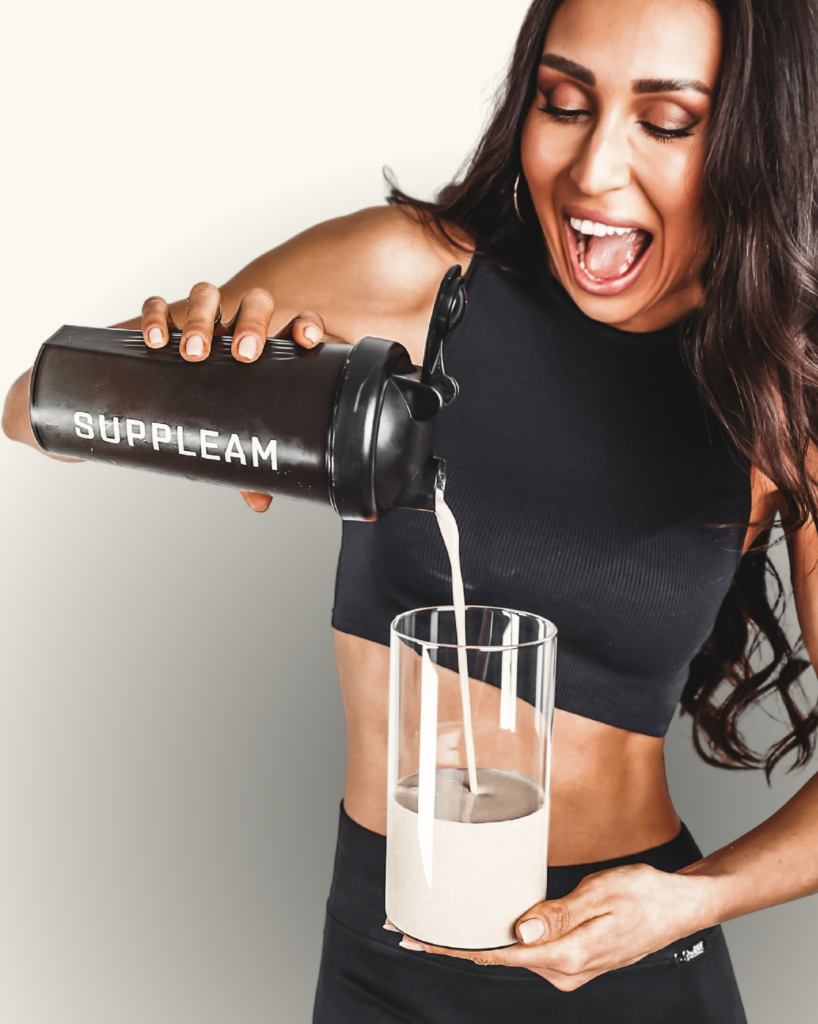
How does protein powder work for muscle? Some facts in a row
- Drinking a protein shake around your workout is a quick way to get a lot of protein.
- Protein powder provides many essential amino acids needed for muscle recovery. Essential amino acids are protein building blocks the body can’t produce on its own. So, you have to ingest them through diet.
- Protein from protein powder can be broken down into amino acids relatively faster. This is how amino acids are available in no time and can quickly reach muscles for recovery after strength training.
- A 40gr serving of protein powder provides 30gr of usable protein packed with essential amino acids. This makes it easier to achieve the daily protein recommendations for muscle building. Getting enough protein daily is essential for muscle building.
How does protein powder work forweight loss? Some facts in a row
- Protein powder can help with weight loss by reducing hunger and cravings. A protein shake can help with less eating and snacking.
- When losing weight, your body might burn a lot of muscle along with fat. Protein powder, rich in essential amino acids, helps keep muscle intact. While losing weight, you need more protein if you want to maintain muscle. Muscle slightly burns more calories than fat, even at rest.
- A serving of protein powder is low in calories, only 100-140 kcal (depending on your serving). This makes it easier to reach daily protein recommendations without ingesting too many calories.
Different Types of Protein Powder
Whey Protein
Whey protein is one of the most popular forms of protein powder and is quickly absorbed by the body. The proteins from cow’s milk are very similar to our own body proteins. Whey protein powder is less sustainable than plant-based protein powder. Additionally, whey is (often) not suitable for people with irritable bowel syndrome, lactose intolerance, people paying attention to sustainability and vegans.
Casein Protein
Casein protein is also made from cow’s milk. The difference with whey protein powder is in the absorption rate. Casein is absorbed more slowly by the body and is therefore often used as a “slow-acting” protein just before going to sleep. Casein is also a cow’s milk product. Because of this, casein is (often) not suitable for people with irritable bowel syndrome, lactose intolerance, people caring about sustainability and vegans.
Plant-Based Protein (lactose-free protein powder)
Plant-based (vegan) protein powders are made from pea, rice and/or soy protein and are sometimes enriched with essential amino acids. A high quality vegan protein powder can provide a lot of protein per 100 grams of product, provides a lot essential amino acids and can be absorbed quickly. Plant-Basedprotein powder is naturally lactose free, 100% vegan and is a more sustainable alternative to mass-produced whey and casein protein powders.
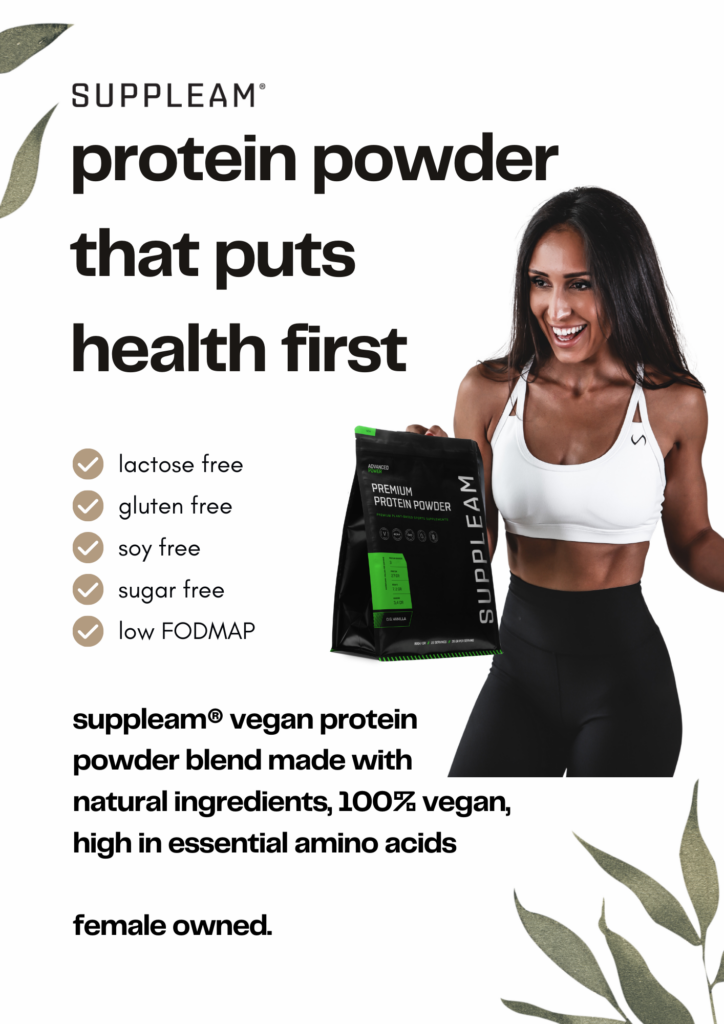
How to use protein powder?
You can take a serving of protein powder at any time of the day. The most popular way to use protein powder is as a protein shake around your workouts – right before and/or after exercise. Making a protein shake is very easy: mix 350-400ml of water or plant-based milk with 35-40gr of protein powder in a shake or blender.
You can also incorporate protein powder into a meal. Make protein yogurt , for example, with fruit and crumbled cookies. Or mix with oatmeal, plant-based milk, nut butter and fruit. You can also bake with protein powder. Think protein brownies and protein pancakes.
How much protein powder to use?
The amount of protein powder you need depends on how much extra protein you need to reach your daily requirement. Your daily protein requirement can vary and depends on your body weight, age activity level and goals. A general guideline is 1.6 to 2.2 grams of protein per kilogram of body weight per day for optimal changes in body composition.
If you use 1 serving of high quality protein powder of 40gr, it gives about 30gr of usable protein. Protein powder isn’t meant to be your only source of protein. You want to ingest a variety of protein sources, think tofu, white fish, salmon, shrimp, chicken, legumes (lentils, lupine, black beans etc), seitan (wheat protein) and egg. A protein powder can be part of this range, but not a substitute. 1-3 servings of protein powder fits nicely within a balanced diet and active lifestyle.

